Reading-Writing Plus - Student Access (e-mailed)
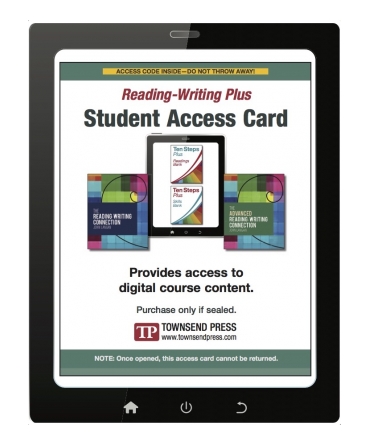
Overview
A 10-month digital subscription to Reading-Writing Plus. This code, delivered by e-mail, grants students full access to both Reading-Writing Connection eBooks, 100+ Townsend Library eBooks, and electronic assignments for all titles The Reading-Writing Connection and The Advanced Reading-Writing Connection.
More information
Key Features of the Learning Center and Reading-Writing Plus:
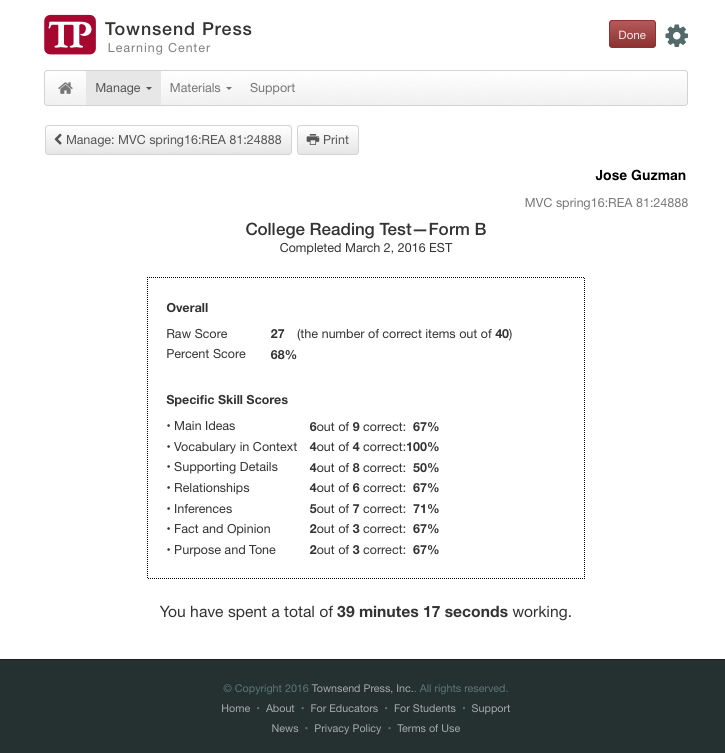
These assess students’ specific skills and provide meaningful data that can inform class instruction.
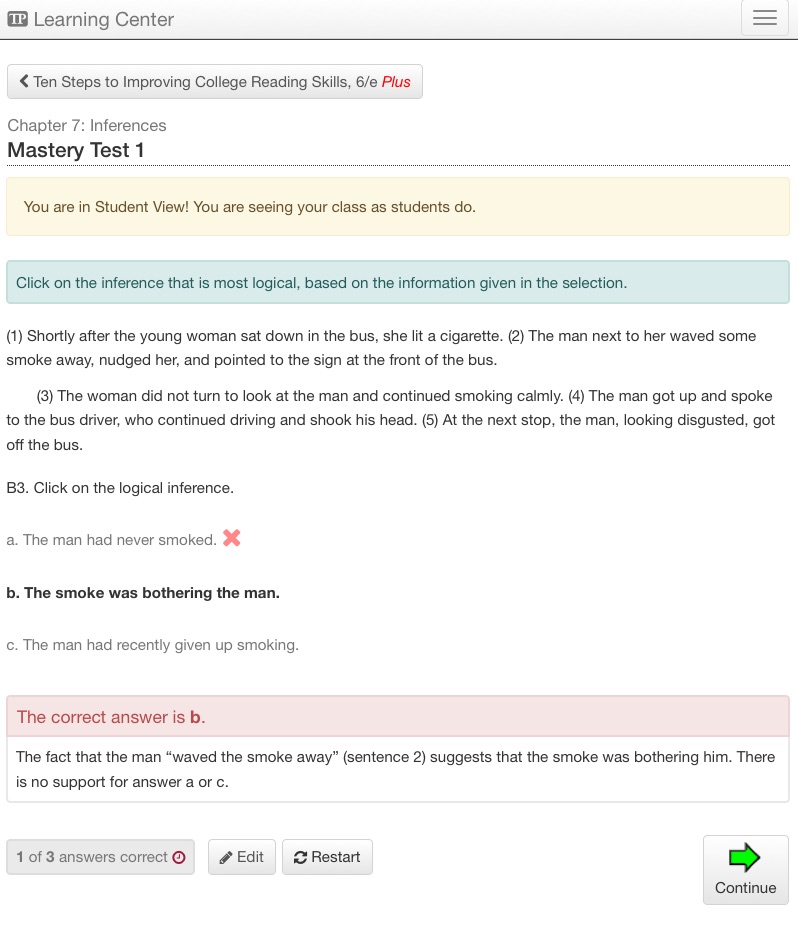 Thousands of Interactive Items
Thousands of Interactive ItemsEach item includes helpful annotations that effectively teach the reading skills students need to learn.
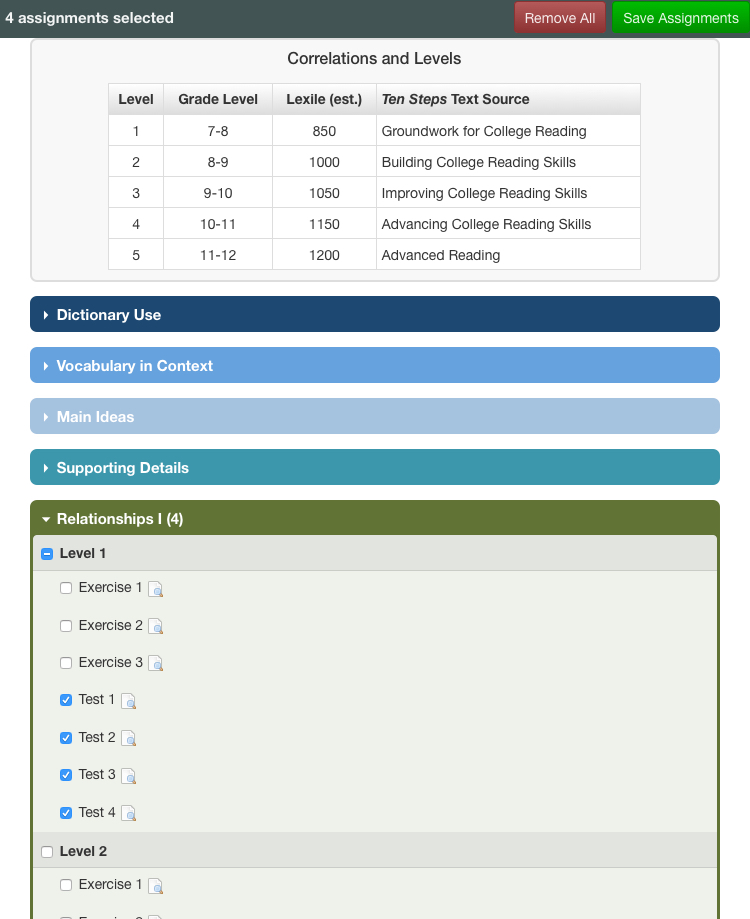 Integrated Mastery Tests
Integrated Mastery Tests Written by the author of the text, these tests feature the same clarity and friendly tone found in each Reading-Writing Connection text. They are also seamlessly linked to the skills taught in the books/eBooks.
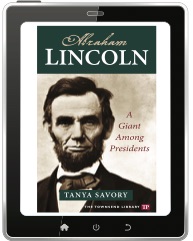 The Townsend eBook Reader
The Townsend eBook ReaderThis browser-based reader allows students to read, bookmark, highlight, and annotate their Townsend Press eBooks.
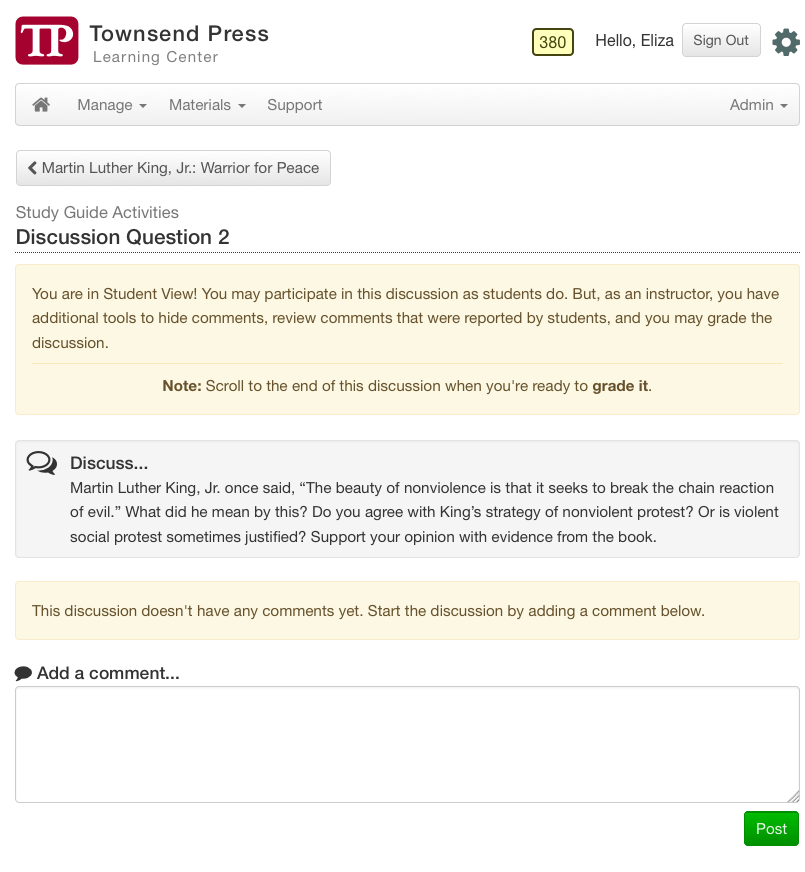 Open-Ended Assignments
Open-Ended AssignmentsNew to the Learning Center and available in Reading Writing Plus, these include writing prompts and hosted discussions for Townsend Library titles, allowing students to interact with readings and with classmates to facilitate learning.
What's included in the full version of Reading-Writing Plus:

Reading-Writing Plus includes full eBooks of both of our acclaimed titles: The Reading-Writing Connection and The Advanced Reading-Writing Connection. eBooks are accessed inside the Learning Center and include bookmarking, highlighting, and note-taking capabilities.
 The Readings Bank:
The Readings Bank:Reading-Writing Plus comes with 15 new readings complete with Lexile scores and reading comprehension and writing assignments. These readings retain the same lively, high-interest quality of our books. See for yourself today with your instructor account. Don’t have one? Visit www.townsendpress.net and create one.
 The Skills Bank:
The Skills Bank:Want to cover a unit on main ideas? Looking to teach a modular course on inferences? Need students in your co-requisite class to brush up on supporting details? The Skills Bank makes it easy. Featuring the online exercises and tests from our companion Ten Steps Series, the Skills Bank lets you choose the skill(s), level(s), and sequence you want to teach.
 The Townsend Library:
The Townsend Library:To become stronger readers, students need to read. With Reading-Writing Plus, they can. eBooks of all 100+ titles in the popular Townsend Library are available AND can be assigned in classes.
 Exercises and Mastery Tests:
Exercises and Mastery Tests:The Learning Center has long hosted thousands of Ten Steps exercises and test items to teach reading skills. *These materials are now part of Reading-Writing Plus and require a paid subscription to access.
TP's Reading-Writing Connection and the Common Core State Standards
Looking for a powerful, effective, Common Core-aligned resource to help you teach reading and writing? You've got it with Reading-Writing Plus.
The Reading-Writing Connection and its digital companion, Reading-Writing Plus, helps students learn the reading skills needed for success in the classroom and beyond. In the course of building students’ reading and writing skills, The Reading-Writing Connection also addresses the competencies and benchmarks outlined in the Common Core State Standards (CCSS).
The connection between the Common Core and The Reading-Writing Connection emerges from their shared educational fundamentals. Both draw from practical classroom experience and research in the fields of reading and composition. Both focus on the same goal: to empower students to be strong, active, and critical readers and writers. And both, in an effort to achieve this goal, outline a series of foundational skills students need to master. The Reading-Writing Connection goes one step further; it teaches these skills through practice exercises, assignments, readings, and tests.
The Reading-Writing Connection covers the CCSS Anchor Standards for Grades 7–9 itemized below, in the following categories: Reading, Writing, Speaking & Listening, and Language.
In addition, The Reading-Writing Connection also fulfills an impressive number of CCSS benchmarks for the specific grade levels it spans. The downloadable Reading-Writing Connection CCSS Grade-Level Analysis, lists the specific CCSS benchmarks, by grade, covered in the book.

[1] CCSS Anchor Standards citations are coded as follows: The abbreviation of the instructional strand’s name and then the standard number. So the standard labeled “R.3” indicates the “Reading” strand, standard number three, which is “Analyze how and why individuals, events, and ideas develop and interact over the course of a text.” For a complete listing of the CCSS, please visit www.corestandards.org.
